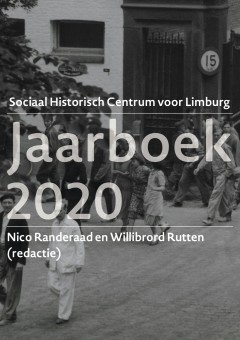Een alternatief voor het krankzinnigengesticht? Psychiatrische zorg in Maastricht en de lange aanloop naar een bureau voor psychiatrische voor- en nazorg (1937)
DOI:
https://doi.org/10.58484/ssegl.v65i.12886Trefwoorden:
twintigste eeuw, medische geschiedenis, Limburg, geestelijke gezondheidszorg, psychiatrieSamenvatting
The care for psychiatric patients outside mental asylums developed in the Netherlands during the first decades of the twentieth century. In Maastricht, a psychiatric pre- and after care facility opened in 1937, but little is known about its history. This paper attempts to unravel this history and analyses to what extent causes which stimulated psychiatric care outside the mental asylum on a national level also played a role in Maastricht. It becomes clear that Maastricht had its own local dynamic; overcrowding of the mental asylum was never an issue here, growing costs of hospitalization in mental asylums did not encourage the local government in Maastricht to search for alternatives and due to the absence of a psychiatrist no new perspectives on hospitalization and psychiatric care in society came into being. Furthermore, it is likely that family members and philanthropic associations played an important role in taking care of and supporting psychiatric patients. It thus seems that in Maastricht there was no strong sense of urgency or need to develop new forms of psychiatric care outside the mental asylum. The provincial cross society initiated a psychiatric pre- and after care facility. This however could only be realized because of the presence of a psychiatrist in Maastricht since 1936, who supported this new facility. The Maastricht ‘case’ broadens our view and understanding of the development of psychiatric care in society in the Netherlands.
Downloads
Gepubliceerd
Nummer
Sectie
Licentie

Dit werk wordt verdeeld onder een Naamsvermelding-NietCommercieel 4.0 Internationaal licentie.



